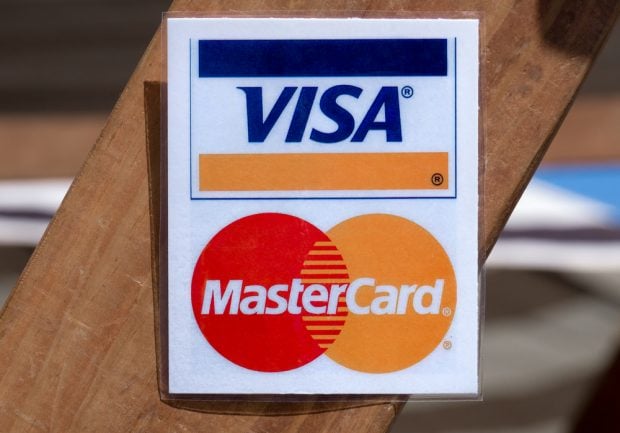ARLINGTON, Va. — In the end, the consumer will likely have thefinal say on whether check imaging makes it all the way to theATM.
The expense of upgrading existing ATMs or purchasing new ones withthe technology, combined with a lack of government or industrymandate to offer imaging at the retail level, may keep thetechnology as a primarily back-office application, the executivessay.
“The infrastructure for image check transfer and acceptance betweeninstitutions is up and running,” explained Jim Hanisch, executivevice president with CO-OP Financial Services and one of the keyexecutives responsible for working out the kinks surrounding checkimaging.
“But there isn't any real mandate to do it or to take it to theconsumer level. All the legislation did was to allow financialinstitutions to transmit and use check images and to mandate thatfinancial institutions had to accept those that met basicstandards. Whether or not a financial institution originated imagedchecks was always market-driven,” he added.
According to Hanisch and industry sources, Congress began activelyconsidering a law allowing the use of imaged checks as far back asthe year 2000, but the question had remained academic and low onthe legislative agenda until the Sept. 11, 2001 attacks. Thatfateful day drew attention to the vulnerabilities in relying ontransmitting and clearing paper checks. The nationwide ban onflying put into place for two days immediately following theattacks meant that, for a time, few checks were clearing inanything resembling a timely manner and the economy of the wholecountry-and even internationally-slowed.
In response Congress, the Bush administration and the financialservices industry worked together to craft legislation thatPresident Bush signed into law in October 2003.
Since then, the networking and financial services industries,including regulatory agencies, worked to establish standards forcheck imaging and construct what Hanisch called the “imagesuperhighway” for facilitating the transmission and use of imagedchecks.
He also explained the driving force for check imaging has beeneconomic. “It's become a common industry saying so I can't claimit,” Hanisch said, “but no one wants to be the one who puts thelast paper check on the last plane to get flown somewhere to clear.That is going to be one pretty expensive check.”
But even as the industry hashed out check imaging links betweenfinancial institutions and the Federal Reserve, the process ofmoving to check imaging stalled at the retail level. Consumers havemostly experienced the impact of check imaging in their statementsand, in many cases, have experienced quicker check clearing.Relatively few institutions have implemented check imaging at theATM or teller.
“I think one factor is definitely the cost of upgrading existingmachines,” said Mark Smith, a senior manager with Triton Systems,an ATM manufacturer, “but another is that there really aren't lotsof consumers demanding that they be able to start imaging checks atATMs.”
ATM deposits have long had the reputation as being something manyATM users say they would like to be able to do, but then only asmall portion actually use it; Smith indicated that relative weakdemand from ATM users has made it hard for financial institutions,especially smaller ones, to justify the expense.
Hanisch remained optimistic that the economics would favorincluding check imaging at ATMs eventually, pointing out that evenif a credit union images checks and saves money on part of the costof check processing, it still bears a cost if it doesn't image thechecks at the ATM.
“There is the cost of picking up the checks, usually daily, openingthe deposit envelope and processing them, et cetera. It's asignificant cost,” he said.
As an ATM manufacturer, Smith acknowledged that his industry wouldbenefit if there was some sort of government mandate to offer morecheck imaging at the ATM, but beyond industry interest, Smith said,he worried there was no further government interest in checkimaging.
He explained that nature abhors a vacuum, and he feared a vacuumleft on the question of check imaging at the ATM, likening it towhen the card industry giants set up a standard for card securitythat merchants and financial institutions must meet without anyreal input into its development.
“Do I want to be put in a position where I am told I have tomanufacture and market a product to specifications that mycustomers might not have signed onto or be required to meet?” heasked.
Other industry sources pointed out that the ATM industry passed asimilar hurdle when industry leaders mandated a switch over tohigher encryption technology that required existing ATMs beupgraded or new ATMs purchased. In that switchover the leaders ofthe change, primarily Visa USA and MasterCard International,steadily pushed back deadlines to let more financial institutionsspread out the cost of making the change.
However, Smith countered that that those changes had not cost asmuch to make, and there was consensus on the need for the greaterencryption. It's unclear, he noted, that there is an equalconsensus yet on check imaging at the ATM.
–[email protected]
Complete your profile to continue reading and get FREE access to CUTimes.com, part of your ALM digital membership.
Your access to unlimited CUTimes.com content isn’t changing.
Once you are an ALM digital member, you’ll receive:
- Critical CUTimes.com information including comprehensive product and service provider listings via the Marketplace Directory, CU Careers, resources from industry leaders, webcasts, and breaking news, analysis and more with our informative Newsletters.
- Exclusive discounts on ALM and CU Times events.
- Access to other award-winning ALM websites including Law.com and GlobeSt.com.
Already have an account? Sign In
© 2024 ALM Global, LLC, All Rights Reserved. Request academic re-use from www.copyright.com. All other uses, submit a request to [email protected]. For more information visit Asset & Logo Licensing.









